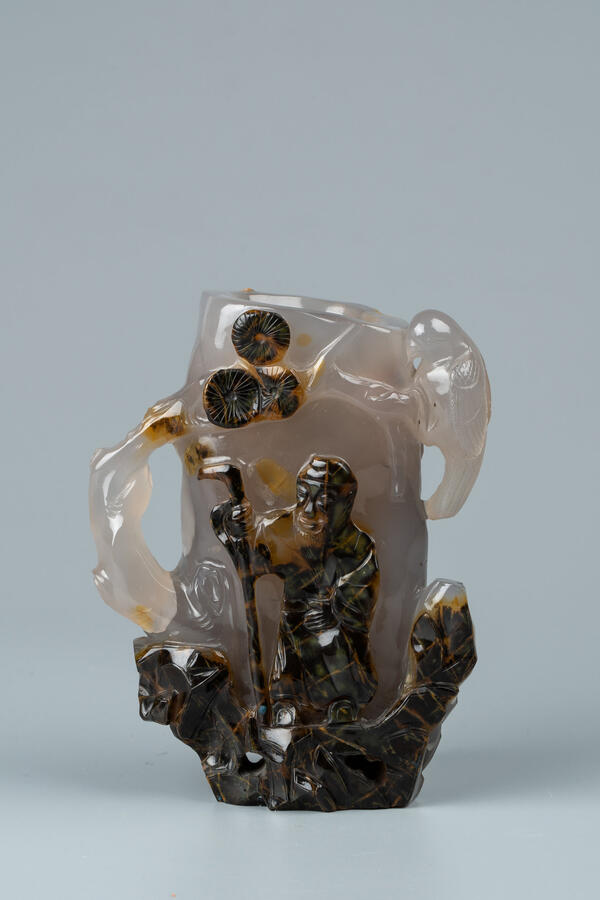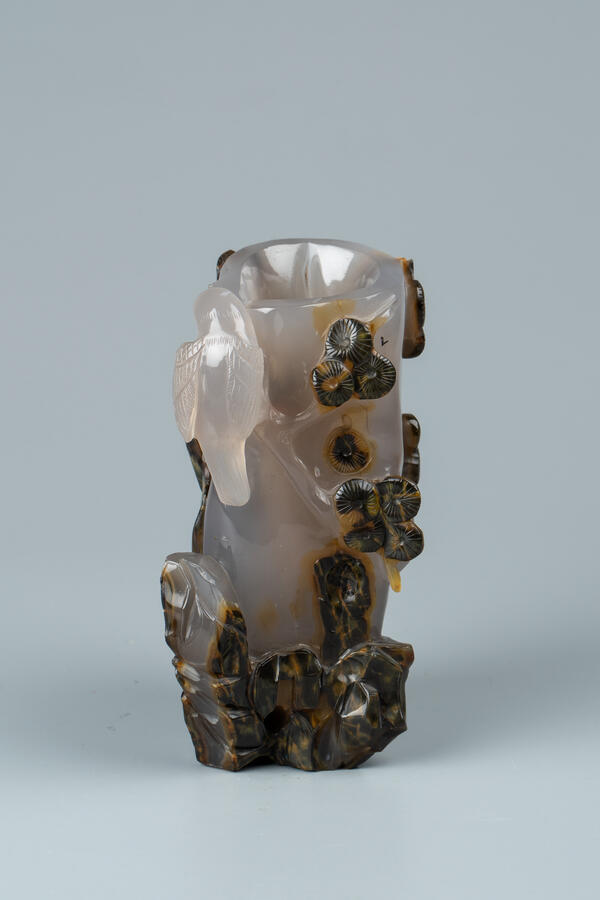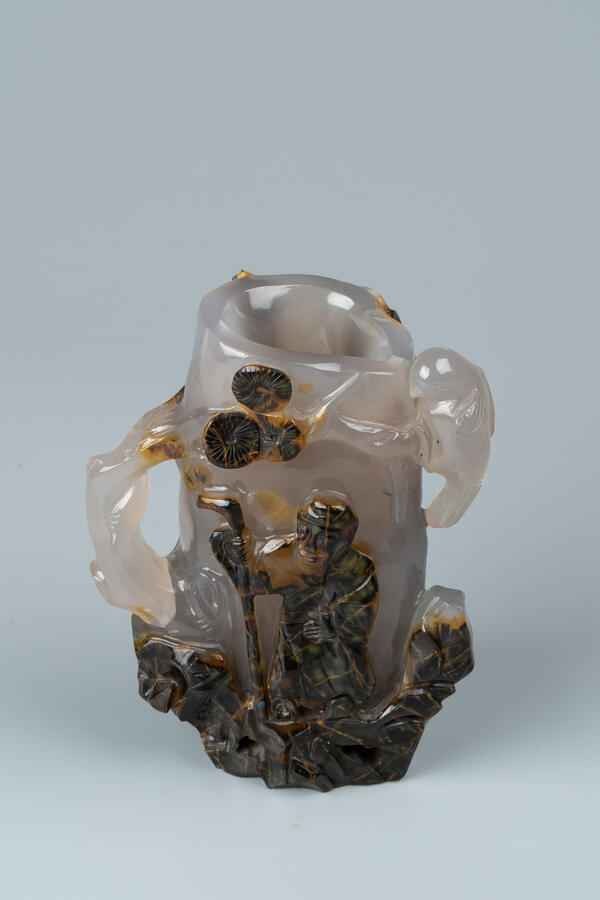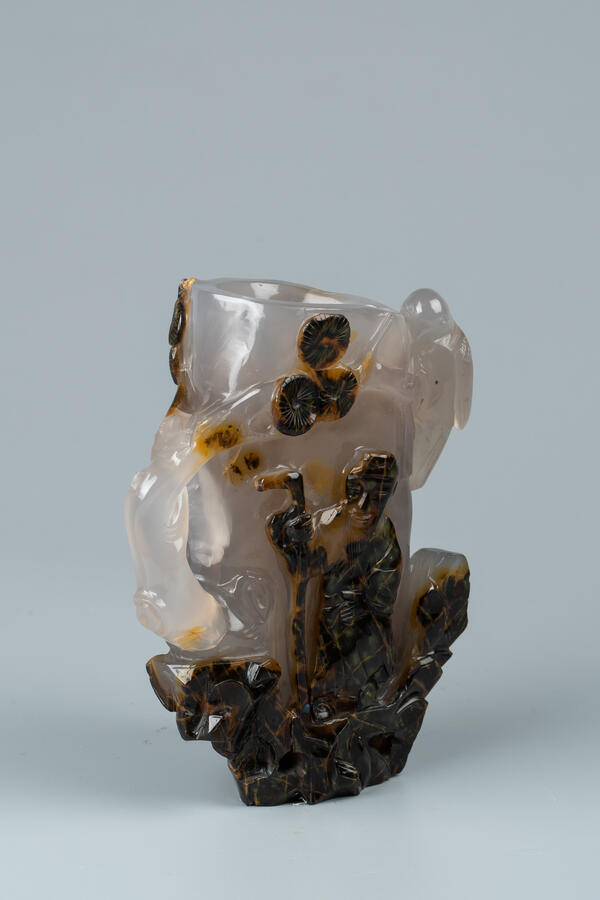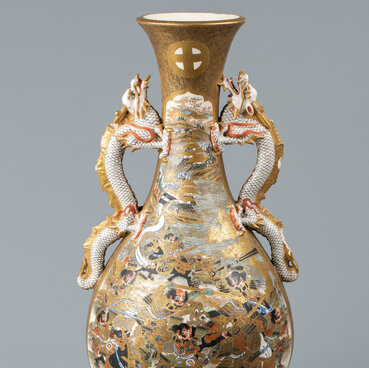The Samara Regional Art Museum displays a collection of Chinese artifacts, in particular, a small and elegant cup for brushes. It is cut out of double-layered agate. Stone carving is considered one of the oldest arts in China, it originated more than four thousand years ago. Stone carving has come a long way from primitive Neolithic items to a highly developed craft renowned throughout the world.
The carved cup from the Samara Regional Museum presents a peculiar story. A wandering monk with a staff in his hand is depicted under the trunk of an umbrella pine. Presumably, this is the scholar-monk Xuanzang, who in 629–645 made a grand journey from China to India and back which overall lasted 16 years. The purpose of his pilgrimage was to visit sacred places, acquire Buddhist texts and study in monasteries. In 648, he completed a description of his religious mission.
In the West, stone is primarily valued for its smooth color and transparency. In China, on the contrary, it was not customary to work with a perfectly transparent and clean stone. The masters of the Celestial Empire have always chosen unique stones with different colors in it, sometimes even with irregularities and veins. The most outstanding works of art were created from these stones. Prior to starting to work, the Chinese artisan studied the shape and direction of the veins in the stone for a long time and tried to artistically use each spot and layer.
For carving, skilled Chinese stonecutters used jasper, jade and jadeite, which is close to it in color, as well as agate, chalcedony, turquoise, rock crystal, amethyst, coral and other stones that attracted masters by their hardness, sonority and a variety of colors.
Agate is the most unusual of all stones. It can have the most bizarre color, pattern and shade. From the ancient times, the agates on which various images were clearly visible were considered especially valuable. However, in order to find out what kind of surprise the stone holds, one needs to saw and sand it.
The carved cup from the Samara Regional Museum presents a peculiar story. A wandering monk with a staff in his hand is depicted under the trunk of an umbrella pine. Presumably, this is the scholar-monk Xuanzang, who in 629–645 made a grand journey from China to India and back which overall lasted 16 years. The purpose of his pilgrimage was to visit sacred places, acquire Buddhist texts and study in monasteries. In 648, he completed a description of his religious mission.
In the West, stone is primarily valued for its smooth color and transparency. In China, on the contrary, it was not customary to work with a perfectly transparent and clean stone. The masters of the Celestial Empire have always chosen unique stones with different colors in it, sometimes even with irregularities and veins. The most outstanding works of art were created from these stones. Prior to starting to work, the Chinese artisan studied the shape and direction of the veins in the stone for a long time and tried to artistically use each spot and layer.
For carving, skilled Chinese stonecutters used jasper, jade and jadeite, which is close to it in color, as well as agate, chalcedony, turquoise, rock crystal, amethyst, coral and other stones that attracted masters by their hardness, sonority and a variety of colors.
Agate is the most unusual of all stones. It can have the most bizarre color, pattern and shade. From the ancient times, the agates on which various images were clearly visible were considered especially valuable. However, in order to find out what kind of surprise the stone holds, one needs to saw and sand it.

